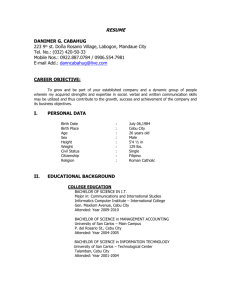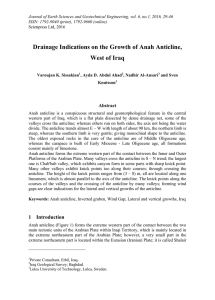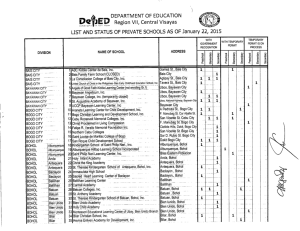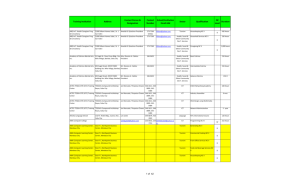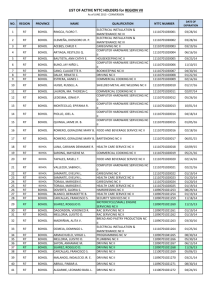Malabuyoc_cebu
advertisement
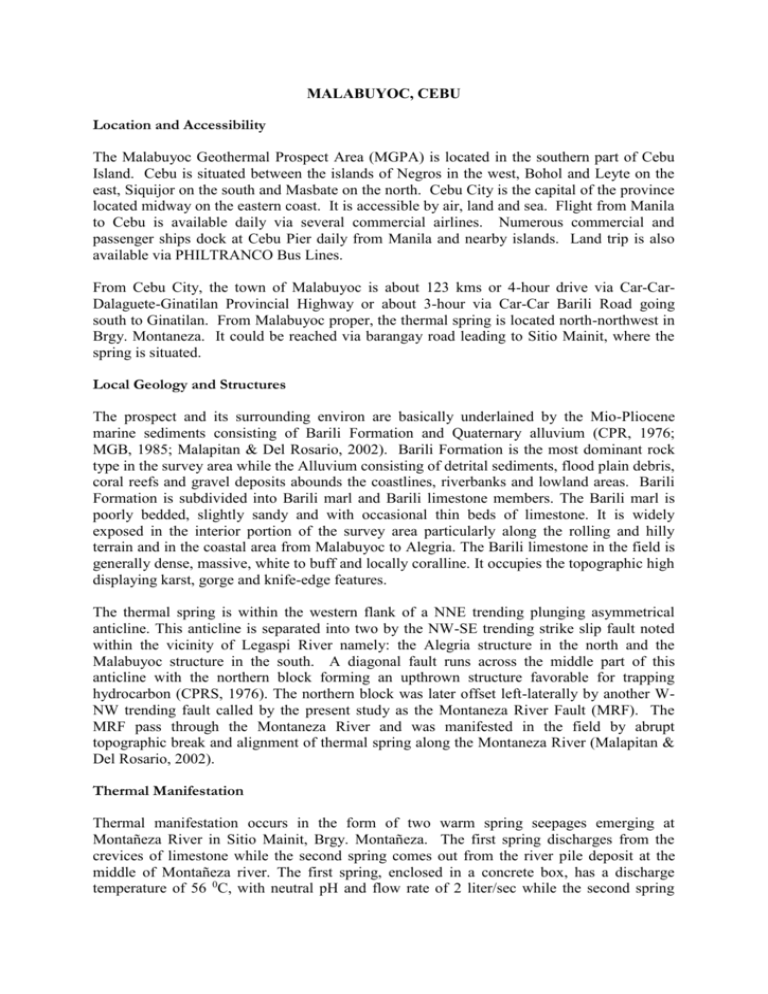
MALABUYOC, CEBU Location and Accessibility The Malabuyoc Geothermal Prospect Area (MGPA) is located in the southern part of Cebu Island. Cebu is situated between the islands of Negros in the west, Bohol and Leyte on the east, Siquijor on the south and Masbate on the north. Cebu City is the capital of the province located midway on the eastern coast. It is accessible by air, land and sea. Flight from Manila to Cebu is available daily via several commercial airlines. Numerous commercial and passenger ships dock at Cebu Pier daily from Manila and nearby islands. Land trip is also available via PHILTRANCO Bus Lines. From Cebu City, the town of Malabuyoc is about 123 kms or 4-hour drive via Car-CarDalaguete-Ginatilan Provincial Highway or about 3-hour via Car-Car Barili Road going south to Ginatilan. From Malabuyoc proper, the thermal spring is located north-northwest in Brgy. Montaneza. It could be reached via barangay road leading to Sitio Mainit, where the spring is situated. Local Geology and Structures The prospect and its surrounding environ are basically underlained by the Mio-Pliocene marine sediments consisting of Barili Formation and Quaternary alluvium (CPR, 1976; MGB, 1985; Malapitan & Del Rosario, 2002). Barili Formation is the most dominant rock type in the survey area while the Alluvium consisting of detrital sediments, flood plain debris, coral reefs and gravel deposits abounds the coastlines, riverbanks and lowland areas. Barili Formation is subdivided into Barili marl and Barili limestone members. The Barili marl is poorly bedded, slightly sandy and with occasional thin beds of limestone. It is widely exposed in the interior portion of the survey area particularly along the rolling and hilly terrain and in the coastal area from Malabuyoc to Alegria. The Barili limestone in the field is generally dense, massive, white to buff and locally coralline. It occupies the topographic high displaying karst, gorge and knife-edge features. The thermal spring is within the western flank of a NNE trending plunging asymmetrical anticline. This anticline is separated into two by the NW-SE trending strike slip fault noted within the vicinity of Legaspi River namely: the Alegria structure in the north and the Malabuyoc structure in the south. A diagonal fault runs across the middle part of this anticline with the northern block forming an upthrown structure favorable for trapping hydrocarbon (CPRS, 1976). The northern block was later offset left-laterally by another WNW trending fault called by the present study as the Montaneza River Fault (MRF). The MRF pass through the Montaneza River and was manifested in the field by abrupt topographic break and alignment of thermal spring along the Montaneza River (Malapitan & Del Rosario, 2002). Thermal Manifestation Thermal manifestation occurs in the form of two warm spring seepages emerging at Montañeza River in Sitio Mainit, Brgy. Montañeza. The first spring discharges from the crevices of limestone while the second spring comes out from the river pile deposit at the middle of Montañeza river. The first spring, enclosed in a concrete box, has a discharge temperature of 56 0C, with neutral pH and flow rate of 2 liter/sec while the second spring partly enclosed by boulders has indeterminate temperature and flow rate due to dilution of river water. Both springs discharge crystal clear, lightly steaming, colorless water with faint H2S odor. No significant hydrothermal alteration was observed at the vicinity of the springs. Chemistry of Thermal Waters The Malabuyoc hot springs have high magnesium and bicarbonate content but low in silica, 18 parts per million (ppm). Boron is less than 1 ppm and SO4 is 69 ppm. The water is neutral, and is of the bicarbonate water type (HCO3 = 294 ppm). This is exhibited in the ClSO4-HCO3 diagram where the water plots on the bicarbonate region. The water plots on the Mg corner of the Na-K-Mg diagram due to high Mg content indicating immature waters. Geothemometry do not give consistent subsurface temperature estimates when several geothermometers are applied. Chemistry of the thermal water indicates a shallow origin and absence of thermal fluid mixing. The associated gas is believed to be due to decomposition of the organic materials in the marine clastics or from petroleum gas trapped in the reef limestone. The prospect has low potential for power generation. The hot water could be used for eco-tourism and domestic purposes. Result of Controlled Source Magnetotelluric (CSMT) Survey Modeling of resistivity results depicts a faulted anticline structure. Resistivity anomalies of the prospect were largely controlled by fault structures with the Montañeza warm spring occurring at the western flank of the north trending Malabuyoc anticline. Malabuyoc system was categorized as a basement aquifer beneath sedimentary basins with the heated fluid probably originating at the center of the basin located east of the survey area. The fluid was channeled along the middle diagonal and Montaneza river faults and emerged along the stretch of Montaneza River as warm seepage. The best target site to drill a well for spa and resort development is the area bounded by steep resistivity gradient coincident with MRF. Possible hot water can be extracted from permeable karst aquifer between –100 to –300 m depth. Assessment for Spa Resort Development The hot spring in Malabuyoc is ideal for spa resort development because of the following factors: a) its spring water is hot at 59 degrees centigrade; b) excellent natural setting; c) presence of other tourist attractions, e.g. dolphins in the Tanon Strait-Malabuyoc side; and d) proximity to Moalboal and Badian which are both existing resort areas in Cebu. In addition, the community around the area enjoys the luxury of electricity and potable water supply as well as the communication facilities that consist of mobile phones and a public calling office located in the town’s center.





